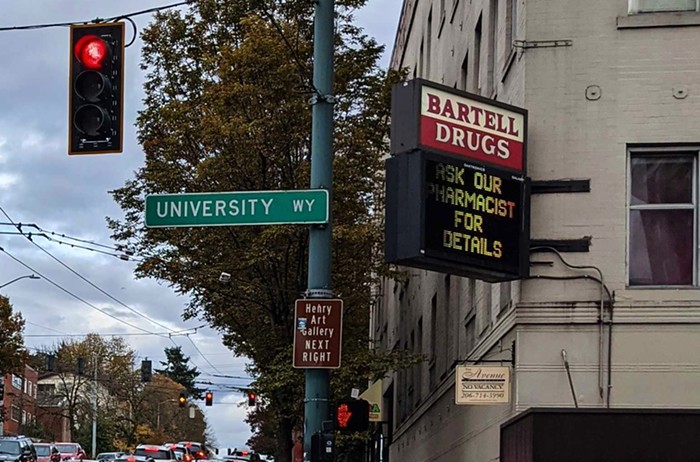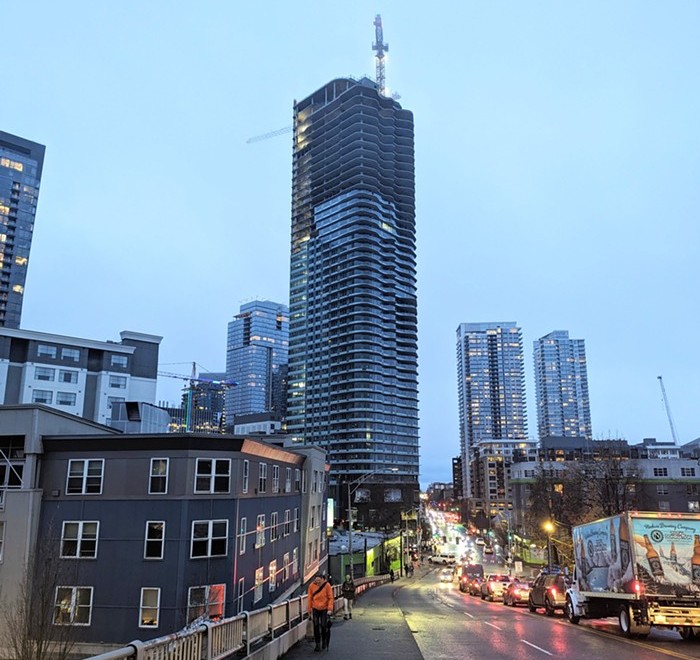
Seattle is still experiencing a boom whose length and scale is astonishing. As a consequence, the city is in a position that all other mid-sized US cities find desirable and spend a great deal of mental energy (and money) attempting to obtain. What we can say about Seattle with great confidence is it has fully realized the market-driven model of urban development. And because there are no other models politically available for city governments and planners, we can examine our own city and say exactly the results and substance of this kind of growth. What is it that actually grows when the logical of capital (money making more money) determines, with little political resistance, the production and organization of urban spaces?
We can easily agree that successful market-directed growth leads to eye-popping abundance. But if such is the case, and Seattle is a model city of free-market urban development (so much so that its defining company, Amazon, has other cities bending over backward to win its HQ2 prize), why would Mayor Jenny Durkan, on presenting her first budget, turn not to a narrative of generosity but to one of scarcity—the austerity narrative? This can only mean one thing. Seattle's evident abundance is not the same as the type that automatically comes to mind when most think of or imagine plenty.
How could one ever speak of cuts and belt-tightening if abundance was the same for all people? What Durkan made very clear with her austerity talk is that we must get it into our heads that abundance is positive for some and negative for others. Most in Seattle experience the abundance as negative. Meaning, it is there, but it can't be used or consumed directly or at all. And you must count yourself as lucky if this negative abundance provides a low-paying job. That is the structure of an economy that's thriving according to the logic of capital. Durkan's austerity doesn't say there is not enough abundance. There is, as every one can see, lots and lots of it. She is telling us: There is not enough negative abundance.
Durkan, of course, imagines that her ideas of how to run and manage a city budget make economic (common) sense. But in truth, these ideas are not economics as a whole but a kind of economics. It is neo-classical and has its origins in the 1870s. The neo-classical school has a very specific genealogy (it actually excludes the classical works of Ricardo and Marx but includes the philosophy of utilitarianism and lot of mathematics). There are, however, other schools with other genealogies. Some are conventional; others are radical. One of the radical ones has the Israeli philosopher Noam Yuran as its key thinker. In Yuran's work, we find an economics that places luxury, rather than necessity, at the center of capitalist production. Orthodox economics, of course, is indifferent to the content of an economy's output. What matters is just buyers and sellers, and finding the point where both are in equilibrium and clear a market. In Yuran's economics (which also breaks with much of heterodox economics), the content of the output is vital. And it is from this understanding that he correctly concludes that what's fundamental to capitalism (what separates it from the rest) is the over-production and distribution of luxuries.
If a market-driven economy is unregulated, it will automatically generate an abundance that is luxurious rather than useful or practical. To see the fact of this, you only have to look to your city, Seattle, and what has resulted from its 7-year boom. The city has an abundance that is useless (negative) to most of its central and marginal inhabitants. And this is exactly why the mayor's austerity talk is so cruel. What she's really saying is that the abundant city needs less of the abundance that is positive for the majority of its inhabitants.

















